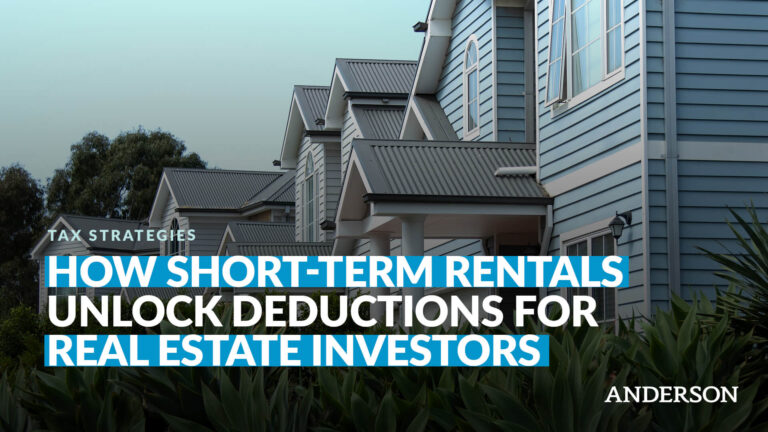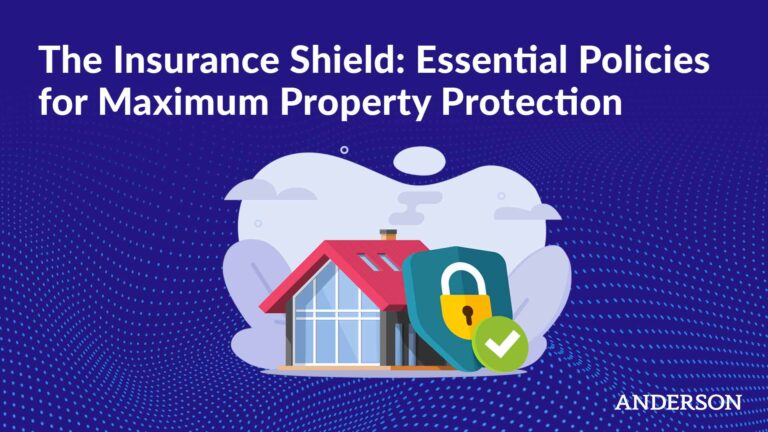Updated October 5, 2021
Cost segregation is a powerful tax strategy that allows real estate investors to break down, or “segregate,” the components of a property to accelerate depreciation and significantly reduce taxable income. By identifying which parts of a property can be depreciated over 5, 7, or 15 years instead of the standard 27.5 or 39 years, investors can unlock substantial upfront tax savings and boost immediate cash flow—money that can be reinvested into additional properties or used to strengthen overall financial returns.
While many investors understand basic depreciation, far fewer realize how cost segregation works or how accessible these benefits truly are. Whether you own residential rental property or commercial real estate, learning how to use cost segregation strategically can transform the profitability of your portfolio.
How to Use Cost Segregation in Real Estate
- Own Residential, Income-producing Real Estate
- Determine Depreciation Date
- Invest in Cost Segregation Study
“Time is money!” We’ve all heard this saying, and it could not be more true than when you’re talking about using cost segregation for your residential real estate investments. You might know how depreciation works, but many investors are not familiar with cost segregation and those who have heard of cost segregation may have some incorrect assumptions about it.

What is Cost Segregation?
For those who are not already aware, the IRS allows you to deduct the depreciation of an asset against your taxable income. In this way, asset depreciation becomes just like any other business expense you can write off on your taxes.
This might seem surprising since the depreciation of an asset you still own is not the same as spending actual cash on something you need for your business. It’s important to realize, however, that if you own commercial real estate or residential real estate, the depreciation of an asset often translates into more business expenses, such as repairs, and even the allocation of intangible resources such as time and mental energy.
The usual depreciation period for a piece of residential real estate is 27.5 years from the time when it first becomes rentable, and likewise for a piece of commercial real estate over the course of 39 years.
For example, let’s say you purchased a multifamily duplex for $500k, and the land it sits on was assessed at $50k. That means the building itself is, for the purposes of this IRS depreciation calculation, worth $450k. Land does not depreciate in value, at least for accounting purposes when it comes time to do your taxes.
This means that over the course of 27.5 years, your annual tax write-off for this property will be $16,363. If the duplex generates $24k in rental income every year, your final reportable taxable income for this asset will be reduced to $7,636.
That all sounds like a great benefit in terms of reducing your taxes, but wouldn’t it be nice if you could accelerate some of those savings, especially if you needed more money to start funding a different investment?
Cost segregation allows you to classify your real estate assets in such a way that you can benefit from accelerated depreciation. If you depreciate your assets on a shorter time schedule, then you will accelerate your depreciation deductions and reduce the amount of income tax you pay. This boosts your cash flow and allows you to keep more of your money now, maximizing the time value of money for you.
How to Use Cost Segregation in Real Estate
“Depreciation” is a term describing when something falls in value over a period of time. It is the opposite of appreciation, which describes an increase in the value of something over a period of time. Depreciation is also a tax term used to describe the reduction in value of an asset over its useful life.
In the tax world, depreciation is a non-cash expense, meaning that it is an expense that is an accounting entry rather than an actual out-of-pocket cost. Yes, the IRS allows you to deduct this expense even though you are not paying any cash out of pocket! Businesses can deduct the depreciation expense for assets they purchase for business use in accordance with the IRS rules governing depreciation.
Let’s discuss the basics of how to use cost segregation in real estate:
1. Own Residential Income-producing Real Estate
The first step to obtaining a depreciation on real estate is to own real estate, of course. You are considered the owner of a property even if it is subject to a lien, including a mortgage you owe to a lender (after all, you are the one paying taxes on the property). If you use the property for business or for producing income (such as rental income) then you can depreciate it. If the property is expected to stand for more than one year, and yet, has a determinable useful life in terms of income-producing ability, you can depreciate the asset.
2. Determine Depreciation Date
The IRS rules say that residential income-producing property can be depreciated over a period of 27.5 years from the date it is placed in service (i.e., made available to rent). That means if you purchase a single-family home for investment on March 1st, spend two months repairing it, put it on the market for rent on May 1st, and begin a new lease with a tenant on June 1st, then May 1st should be the date you use to begin depreciating the property.
If your primary way of making money through real estate investments is by flipping houses, your properties would not meet the criteria for depreciation. However, if you decide to become a landlord and rent the property out, a cost depreciation study may be worth it for the depreciation tax savings.
Depreciation Expense Example
Using the straight-line method of depreciation (meaning the aggregate depreciation expense is evenly distributed over the entire useful life of the asset) and without regard to your specific income tax bracket, suppose that you purchased a multi-family property for $700,000.00 on January 1, 2019. The land is worth $100,000.00 and the improvements are worth $600,000.00. January 1st is the date the investment property is considered placed in service since it is fully occupied by tenants when you close. The useful life of your investment property is 27.5 years.
Based on the above, the annual depreciation expense for your investment property is $21,818.18 per year from January 1, 2019, through June 30, 2046 (based on $600,000.00 of real estate improvements since the land is not depreciable). Let’s say that this investment produces $30,000.00 in income for you in 2019. The 2019 income attributed to you for this investment will be $8,181.82 ($30,000.00 income less $21,818.18 depreciation expense). That sounds great, right? It is great, but now let’s take a look at how using cost segregation can benefit you even more.
3. Invest in a Cost Segregation Study
A cost segregation study will dissect the various components of the property and determine how you can compartmentalize assets and improvements into different classes of depreciation.
Land improvements can be depreciated over 15 years; equipment can be depreciated over the course of five years, and the building itself (as mentioned) over 27.5 years for residential real estate and 39 for commercial real estate investing. Thanks to the Tax Cuts and Jobs Act (TCJA), investors can also take a bonus depreciation of all land improvements and equipment for one year, accelerating the entirety of that amount of depreciation against one year of taxable income.
Cost Segregation Myths
Before we get to the cost segregation example, let’s go over some of the cost segregation myths.
Myth 1: “Cost segregation is not available for residential real estate.” That is false. Cost segregation is available for all investment properties, whether they are used for commercial or residential purposes.
Myth 2: “Cost segregation only benefits very high-value properties.” This is also false. The Tax Cuts and Jobs Act of 2017 (the “TCJA”) doubled the “bonus depreciation” amount from 50% to 100% and extended this benefit to “used” investment property acquired after September 27, 2017. This change in the law makes cost segregation even more valuable to investors than it was before. We’ll take a look at “bonus depreciation” below.
Myth 3: “I will just pay back all of the depreciation later because of depreciation recapture when I sell.” While there may be a depreciation recapture liability upon the sale of your investment property, the depreciation recapture rate is currently 25% which is still well below the highest tax bracket for individuals (37% in 2018). Depending on your income tax bracket, you may have a lot to gain. Plus, when you deduct more depreciation earlier on, you will maximize the time value of money (having the use of money today is worth more than having the use of the same amount of money two years from now).
Myth 4: “A cost segregation study is too expensive.” Cost segregation studies are not free, but if you are able to save significant tax dollars early on, then the study will pay for itself from the tax savings you receive during the first year you benefit from accelerated depreciation.

Cost Segregation Example
Let’s say that you purchased the same multi-family property we discussed above in the depreciation example. You paid $700,000.00 for the investment property, $100,000.00 of which is attributed to land. As you recall, land is not depreciable under the tax code, so we are left with $600,000.00 to depreciate, but instead of simply classifying all of that as the building for tax purposes, your cost segregation study says that you can classify $100,000.00 as land improvements (depreciable over 15 years) and $75,000.00 as equipment (depreciable over five years). In addition to accelerated depreciation, you are also able to take advantage of “bonus depreciation” under the TCJA (you can take 100% depreciation for land improvements and equipment during the first year of depreciation). This is what your depreciation expense will look like for the first year, 2019.
Wow! By taking advantage of cost segregation, you increased the depreciation deduction for your investment property in 2019 from $21,818.18 to $212,122.00. All you had to do was use the laws that were already in place. You might be thinking, “That looks really good, but my income for 2019 is only $30,000.00.” True. That is why you will recognize zero income from this investment property for 2019 and you will be able to carry the 2019 loss forward for future use.
| Investment Property ($700,000) | Depreciation Term | 2019 Depreciation |
|---|---|---|
| Land ($100,000) | n/a | n/a |
| Land Improvements ($100,000) | 15 years | $6,667 |
| Equipment ($75,000) | 5 years | $15,000 |
| Building ($425,000) | 27.5 years | $15,455 |
| Bonus Depreciation (100% of Land Improvements and Equipment for year one) | n/a | $175,000 |
| TOTAL 2019 Depreciation | $212,122 |
Wow! By taking advantage of cost segregation, you increased the depreciation deduction for your investment property in 2019 from $21,818.18 to $212,122.00. All you had to do was use the laws that were already in place. You might be thinking, “That looks really good, but my income for 2019 is only $30,000.00.” True. That is why you will recognize zero income from this investment property for 2019 and you will be able to carry the 2019 loss forward for future use.
This is free money! The wealthy have been taking advantage of laws like this since this country was founded. These benefits are available to everyone. So what are you waiting for? “Time is money!”
Cost Segregation Can Result in Significant Savings for Residential Real Estate Investors
It’s important to note that deprecation recapture allows the IRS to reclaim some of the tax benefits that depreciation provided you while you were claiming it. That’s why it behooves you to work with a CPA or accounting firm that understands real estate investing, so they can make sure your financial plan is healthy and robust in the long term.
Though it’s nice to have a wonderfully sized tax write-off over the course of 27.5 years, there may be certain circumstances in which you’d like to pay less taxes now, to have more money in your pocket for immediate involvement in your next investment. This is where the idea of a cost segregation study comes into play.
Rather than wait 27.5 to depreciate the entirety of a residential real estate asset, you can reap the rewards of depreciating select portions, like landed improvements and equipment, faster. Though we’ve discussed residential real estate in this article, the idea of cost segregation and its tax benefits becomes even more appealing when you talk about commercial real estate. In most states, this means buildings with five or more residential units, and buildings with rental spaces allocated for commercial usage (like retail and restaurants). In these contexts, especially consumer-facing retail, office space, or industrial real estate, there is often a decent dollar amount invested in developing equipment and land improvements, so reaping the rewards of that in a faster timeline can be of great benefit for investors who want to keep moving.
Real estate investing has a steep learning curve, but individuals who take advantage of legal and tax experts familiar with the industry can see serious financial benefits that will help them succeed. Talk to the CPA or the tax advisor that handles your business and discuss if a cost segregation analysis is right for you. And, if you’re looking for more tips to lower your business’s tax liability, join us for our weekly Tax Tuesday discussion with tax-expert Toby Mathis.
Take advantage of over two decades worth of real estate, tax, and asset protection experience that only Anderson Advisors can provide.
We will help you avoid costly mistakes, financial losses and the unintended consequences of trying to do it on your own.
Contact us today to schedule your free consultation by:
Calling us toll free at: 1-800-706-4741, or
Bonus Video
Receive a detailed risk assessment to assist in lowering problem areas that could wipe out all of your assets with one wrong move. Speak with an Anderson Professional Advisor to get your FREE Strategy Session. Limited-Time offer: FREE (a $750 value.)
















